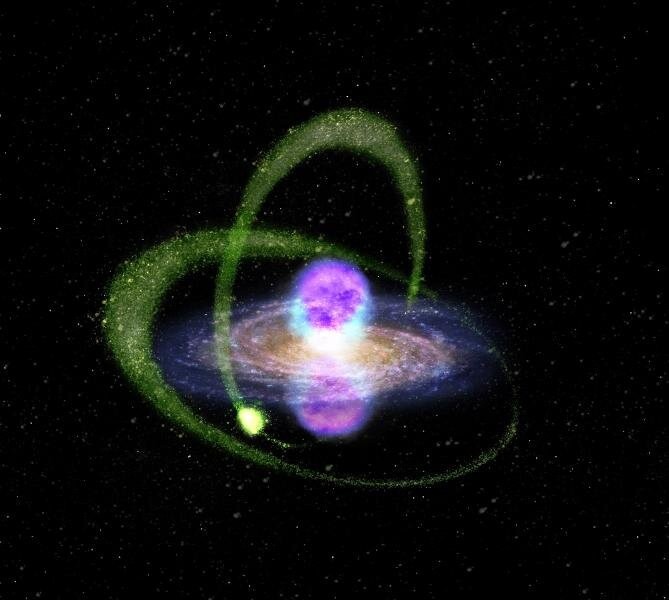
An international team of astronomers discovered a tiny satellite galaxy of the Milky Way loaded with dark matter, but whose emissions are more likely the consequence of millisecond pulsars spewing forth cosmic particles, using massive plumes of gamma radiation.
Gamma Rays Solves Cosmic Anomaly
In case you didn't know, the core of the milky way galaxy is constantly releasing a pair of massive gamma radiation bubbles spanning 50,000 light-years. This was discovered using the Fermi Gamma-ray Space Telescope roughly ten years ago. Phys.org reports that the origins of this hourglass-shaped anomaly have remained unknown.
In detail, these radiation lobes, known as Fermi bubbles, are filled with a few puzzling substructures of powerful gamma-ray emission. The Fermi cocoon, one of the brightest regions in the southern lobe, was assumed to be caused by earlier explosions from the Galaxy's supermassive black hole.
However, this soon changes as an international team of researchers analyzed data from the GAIA and Fermi space telescopes to discover that the Fermi cocoon came from the emission brought about by our neighboring Galaxy, the Sagittarius dwarf galaxy.
The study called Gamma-ray emission from the Sagittarius dwarf spheroidal galaxy due to millisecond pulsars was led by former Kavli Institute for the Physics and Mathematics of the Universe (Kavli IPMU) Project Researcher Oscar Macias (now GRAPPA Fellow at the University of Amsterdam) and Australian National University Associate Professor Roland Crocker, as well as Kavli IPMU Visiting Scientists Shunsaku Horiuchi and Shin'ichiro Ando.
We can glimpse this Milky Way satellite galaxy from Earth through the Fermi Bubbles. Because of its close orbit near our Galaxy and past travels through the galactic plane, it has exhausted most of its interstellar gas. Many of its stars have been torn from its core and stretched into streams. Given that Sagittarius was dormant where it has no gas and no star nurseries, gamma-ray emission may have come from one of two sources. First is through a population of undiscovered millisecond pulsars or dark matter annihilations.
For a bit of a background, millisecond pulsars are relics of certain types of stars that are substantially more massive than the sun and are in tight binary systems. But now emit cosmic particles due to their tremendous rotating energy. Millisecond pulsar electrons hit with low-energy photons from the Cosmic Microwave Background, accelerating them to high-energy gamma radiation.
What Researchers Has to Say
The researchers established that the gamma-ray cocoon could be explained by millisecond pulsars in the Sagittarius dwarf, therefore ruling out dark matter. Their discovery provides insight into millisecond pulsars as excellent accelerators of very intense electrons and positrons. It also shows that comparable physical processes may occur in other Milky Way dwarf neighbor galaxies.
"Our study compels a reassessment of the high energy emission capabilities of quiescent stellar objects, such as dwarf spheroidal galaxies, and their role as prime targets for dark matter annihilation searches," said Macias.
This article is owned by Tech Times
Written by Thea Felicity
ⓒ 2025 TECHTIMES.com All rights reserved. Do not reproduce without permission.




